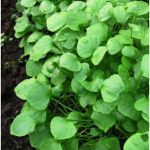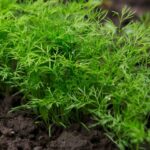Courgette – Ambassador F1
€2.95
Description
Courgette – Ambassador F1 is a very good early variety with dark green fruits. Very reliable. Harvest regularly throughout the summer.
Sowing:
Mid April until late May.
Sow individual seeds into small pots (7cm) or large modules and keep in a warm place. Pot on into a 10cm pot when ready. Plant out in late May-June after hardening off. Initial protection with a cloche is beneficial.
Note: Can be sown earlier with protection.
Approx. seed count: 7
Growing Courgettes – Ambassador F1
Latin name:
Cucurbita pepo
Family:
Cucurbitaceae
Related to:
Pumpkin, squash, cucumber and melon.
Botanical classification:
From the Latin cubirta, a gourd.
Introduction:
Courgettes are well suited to a small garden as they produce a very high yield from a small area. Two to three plants are sufficient to give you a fairly large amount of courgette during their season. Courgettes are the young immature fruits and when left to grow they turn into marrows.
There are special marrow varieties available but I doubt if there are too many dedicated marrow lovers around. Also the trouble with courgettes is that they turn into marrows before you know it.
History:
Courgettes originated in Mexico but now grow all over the world.
Soil and site:
Courgette – Ambassador F1 needs a fertile, free-draining soil which can hold plenty of moisture. Therefore a generous application of well-decomposed compost is beneficial (about 1 bucket per square metre).
They also need a sheltered place in the garden as they really dislike strong wind this is because of their large leaves.
Sowing:
I usually sow seeds in late April individually into 7cm pots. Ideally, the pots are left in a propagator in the greenhouse or on a south-facing windowsill at home. They will also be fine in a tunnel without a propagator however, plants have to be covered up with fleece during cold spells in order to protect them from frost damage.
After about 3 weeks – or before the plants get potbound – I pot them on into 12cm pots which are still left in the greenhouse or indoors.
Planting:
Start hardening off the plants at the end of May and plant out in early June. Do not plant if the weather forecast predicts cold windy spells which can be quite common during this time. In my first few years in Ireland I attempted to plant them out in May and they nearly always failed to survive. However, if you use cloches they should be fine.
Spacing:
Please do not underestimate the space a courgette plant requires. The ideal planting distance is 1 metre. It is important to stick to this spacing but you can interplant some lettuce or annual spinach into the gaps. They can be harvested before the courgettes take over.
Rotation:
Courgette – Ambassador F1 belongs to the cucurbit family. This family is not prone to any soil borne pests and diseases, so you do not need to be too fussy with rotations.
Plant care:
Apart from regular harvesting and keeping the weeds down there is very little else to do.
In cold, wet weather (when few insects are around) you can pollinate the flowers by hand. This will increase the chance to get fruits.
Courgette plants have separate male and female flowers and they are easily distinguished by looking at the flower stalk. The male stalk is plain and the female flower carries a small fruit on the stalk.
You transfer the pollen from the male to the female flowers with a soft brush or remove the male flower and rub it onto the open blooms of the female flowers.
Harvesting:
Harvest courgettes as soon as they are the size you require. In fact, you may have to harvest them about 3 times per week. Overnight they could turn into monster marrows! Try to cut the fruit carefully with a sharp knife at the stalk without damaging the plant. It is best not to leave the marrows on the plants as this will sap all the energy from the plant and reduces the production of new fruits.
Storing:
Courgettes do not store for more than a week in the fridge however, marrows will last for about 3 months in a cool, but frost free building.
Potential problems:
There are very few problems with courgettes. The main problem occurs if you plant them out too early. Also the plants will be damaged by strong, cold winds or die in the first light frost.
During the end of the season plants may get attacked by powdery mildew. There is no cure for it but it does not kill the plant.
How much to grow?
Do not plant too many plants. This year I planted three plants and my wife and children got seriously fed up with them. We had about 20 courgettes per week. Luckily our chickens loved them!
For more information have a look at my monthly newsletters on:
https://greenvegetableseeds.com/newsletters/
For information on organic certification:
Have a look at the Irish Garden magazine:




